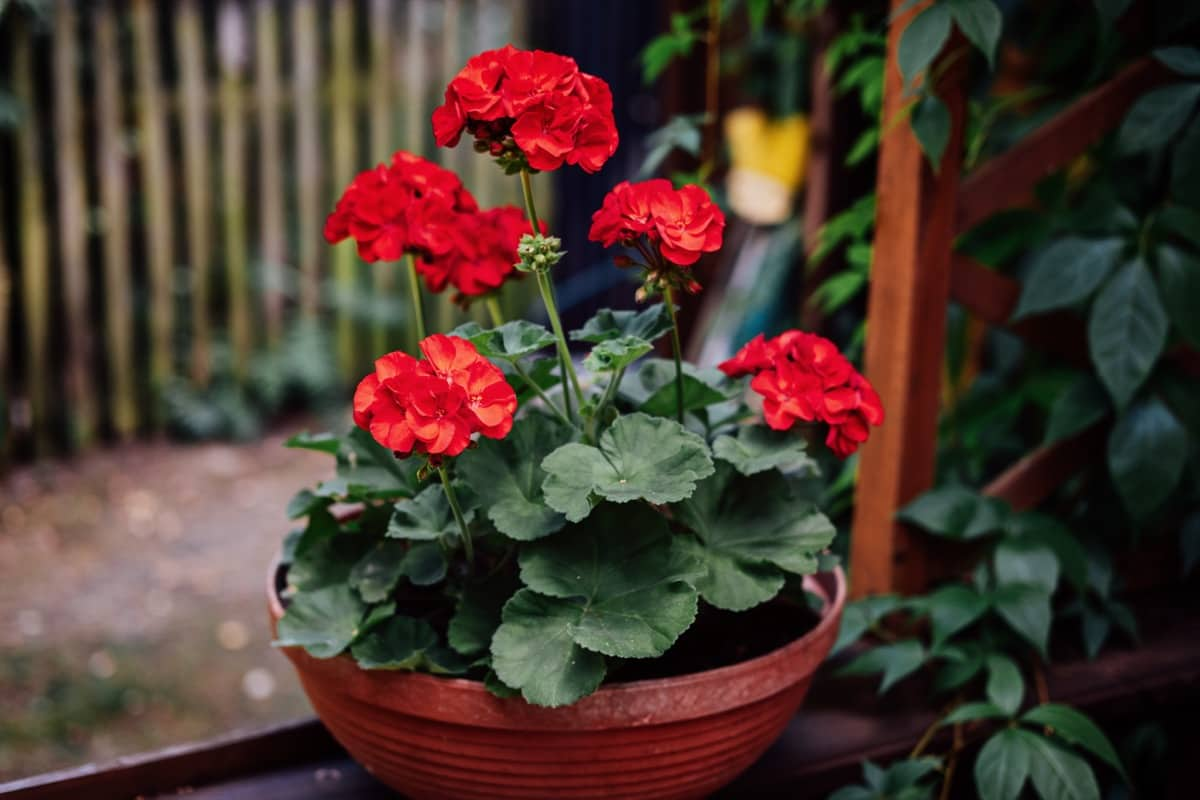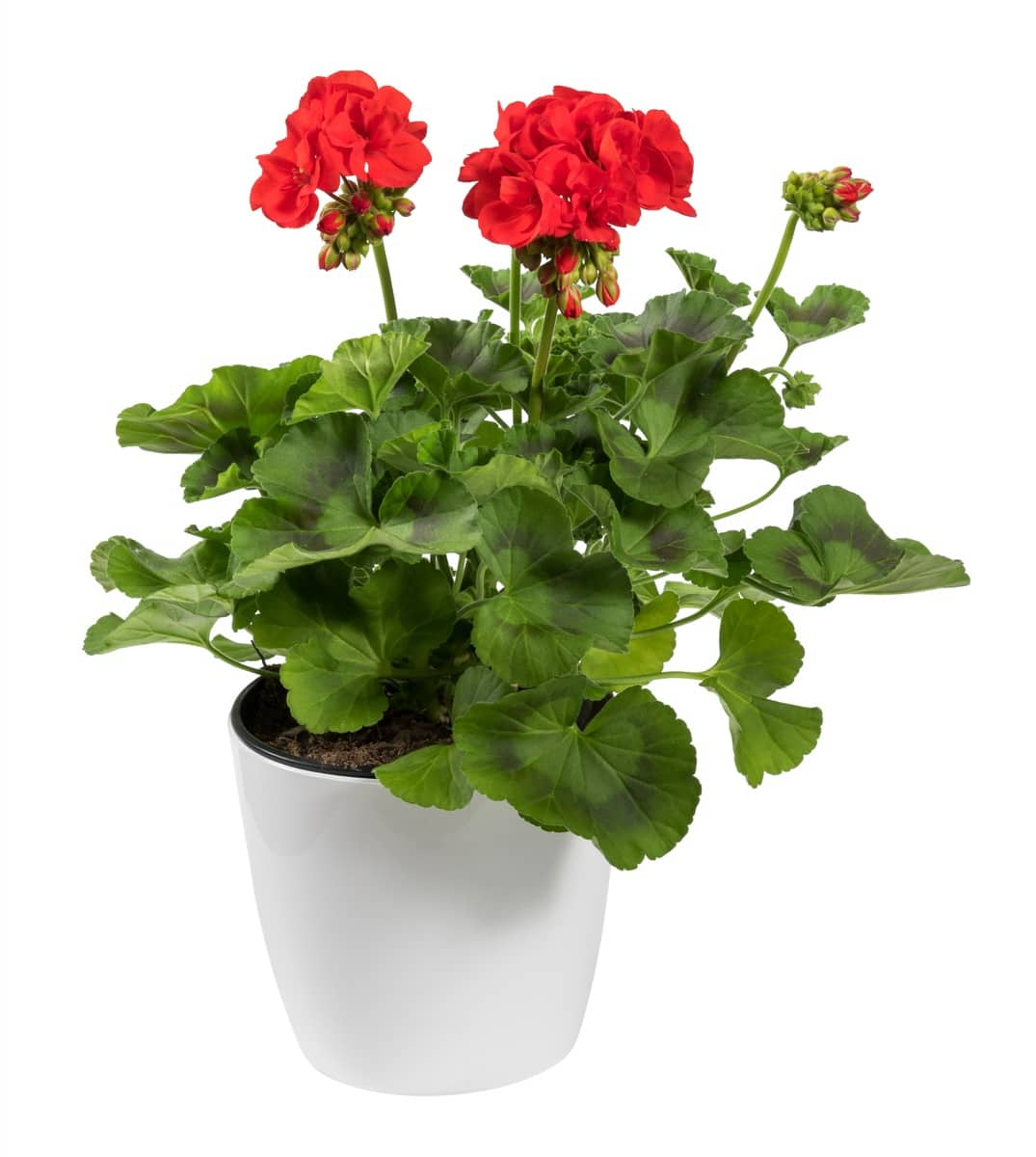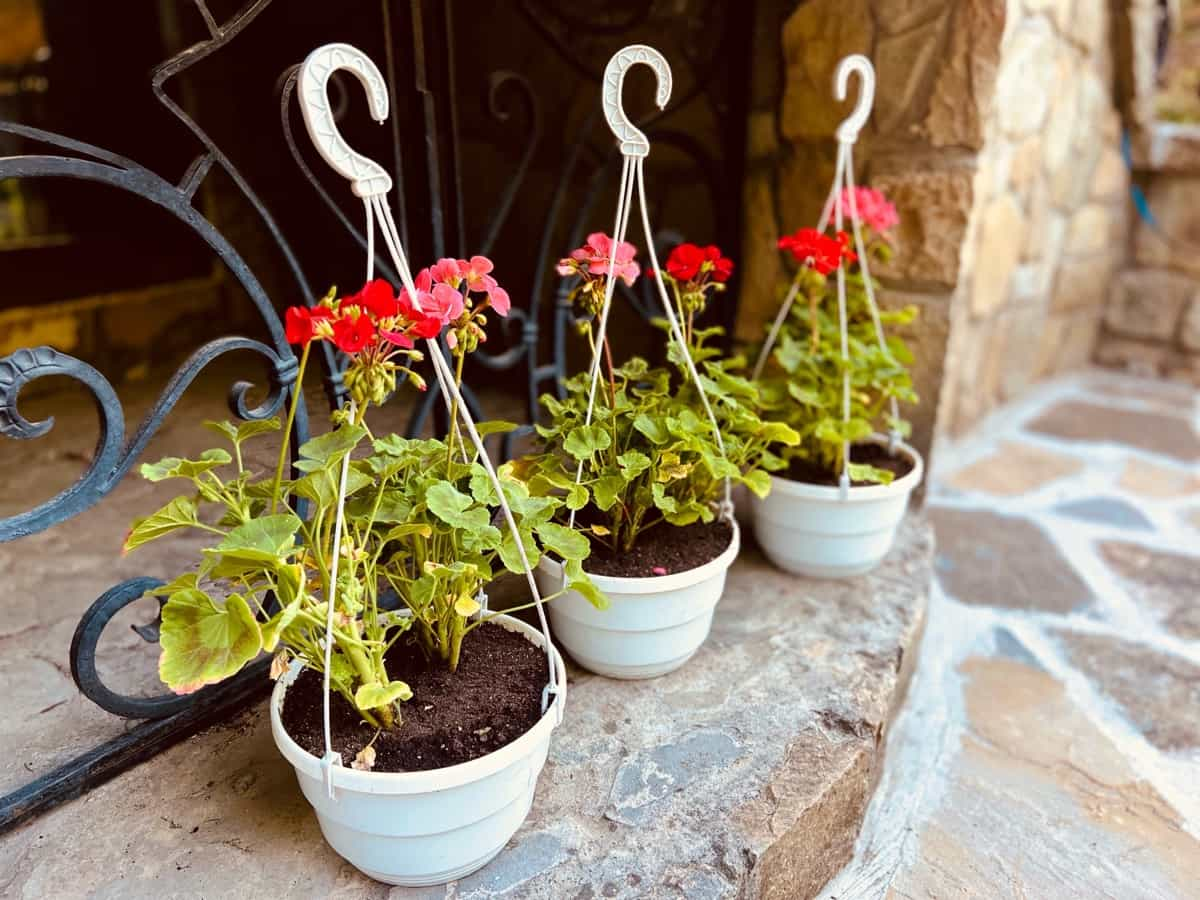Geraniums are popular flowers that are easy to grow and care for. They are perfect for planting in pots, which makes them ideal for those who do not have a garden or yard. Here are some basic steps to help you plant, grow, and care for geraniums in pots.

How to Grow and Care for Geranium in Pots
Step-by-step Guide to Planting Geraniums in Pots
- Choose a pot: Select a pot at least 6 inches deep with drainage holes at the bottom. The pot should also be large enough to accommodate the size of the geranium plant.
- Add soil: Fill the container with potting soil, leaving about an inch of space at the top.
- Add fertilizer: Add a slow-release fertilizer to the soil.
- Plant the geranium: Gently remove the geranium plant from its currently growing container and loosen the roots. Place the plant in the center of the pot and add soil around it, pressing down gently to secure the plant.
- Water the plant: Water the plant thoroughly, ensuring the soil is evenly moist.
- Place the pot in a sunny spot: Geraniums thrive in full sun, so place the pot where it receives at least 6 hours of sunlight daily.
Ideal Soil Mix for Potted Geraniums
Loamy, well-draining soil is best for growing geraniums. If your soil is heavy, incorporate compost, peat, or perlite. If planting geraniums in containers, use commercial topsoil and mix in sand and a little peat moss for the best drainage. Good drainage is essential.
Watering Techniques for Geraniums in Pots
water geraniums in the morning or early evening when the temperatures are low and the sun is not as intense. This helps prevent water loss through evaporation and allows the plants to absorb the needed water better.
The frequency of watering your geraniums in pots will depend on several factors, including the size of the pot, the type of soil, and the climate. In general, geraniums in smaller pots must be watered more frequently than in larger pots.
Choosing the Right Size Pot for Your Geraniums
- A pot should be at least 6 to 8 inches wide and deep, for a single geranium plant is recommended. This will give the roots enough space to grow and allow for adequate drainage. Choosing a pot with drainage holes is also important to prevent water from accumulating and causing root rot.
- If you plan on planting multiple geraniums in the same pot, choose a larger pot at least 12-14 inches wide and deep. This will provide enough space for the roots of each plant to grow and will prevent overcrowding.
Sunlight Requirements for Potted Geraniums
Provide potted geraniums with at least 6 hours of direct sunlight per day to ensure they receive the optimal amount of sunlight. This can be achieved by placing the pots near south or west-facing windows or balconies where they can receive maximum sunlight.
Best Practices for Growing Geraniums in Containers
- Prefer well-draining soil; choose a container with drainage holes to prevent waterlogging. The container should also be large enough to accommodate the plant’s root system.
- Use a high-quality potting mix with added perlite or vermiculite to improve drainage. Avoid using garden soil, which can become compacted and hinder root growth.
- Geraniums prefer moist soil but do not like to sit in water. Water the plant when the top inch of the soil feels dry. Avoid overwatering, as it leads to root rot.
- Use a balanced fertilizer every four weeks during the growing season. Avoid fertilizing during the winter season when the plant is dormant.
- Geraniums prefer full sun to partial shade. Place the container in a location that receives at least six hours of sunlight daily.
- Geraniums benefit from regular pruning to encourage bushier growth and more blooms. Pinch back the stems by one-third in early spring and again after the first bloom cycle.
In case you missed it: How to Grow Geranium in a Greenhouse: A Step-by-Step Guide for Seed to Harvest

Essential Tips for Caring for Potted Geraniums
- Watering once a week is usually sufficient, but this may vary depending on the environment and the size of the pot. It is best to wait until the top inch of soil has dried out before two waterings.
- A balanced fertilizer with equal nitrogen, phosphorous, and potassium is ideal. During the growing season, fertilize every two weeks, but avoid fertilizing during winter.
- Geranium should be placed in a sunny spot with at least 6 hours of direct sunlight daily. The plant may become leggy and weak if it does not receive enough sunlight.
- Pruning your geraniums can help them to grow bushier and produce more flowers. Pinch off the tips of new growth to promote branching. Deadheading spent blooms can also promote new growth and prolong the flowering season.
- Regularly check your Geranium plants for signs of infestation and treat them with neem oil or insecticidal soap if necessary. Geraniums can also be susceptible to diseases such as powdery mildew and botrytis. Avoid overwatering and provide good air circulation around the plant to prevent these diseases.
Fertilizer Recommendations for Healthy Geranium Growth in Containers
Annual geraniums are heavy feeders. The plants must be fertilized once or twice a week with a liquid product to support flower production, especially when planted in containers. Applying a balanced, slow-release granular fertilizer every four to six weeks is good outside the bloom season.
- Geraniums thrive on a balanced fertilizer with equal nitrogen, phosphorus, and potassium percentages (N-P-K). Look for fertilizers labeled 10-10-10 or 20-20-20.
- Apply fertilizer at the right time: Fertilize your geraniums in early spring, mid-summer, and early fall. Avoid fertilizing during the winter months or when the soil is dry.
Preventing Common Pests and Diseases in Potted Geraniums
- Make sure your geraniums are planted in well-draining soil. This will help prevent root rot, a common issue caused by overwatering. Also, avoid getting water on the leaves, encouraging fungal growth.
- Next, watch for pests such as aphids, spider mites, and whiteflies. These can be controlled using insecticidal soap or neem oil, which are safe for potted plants.
- Geraniums prefer a well-ventilated area, so make sure they are not crowded together or placed in a stuffy location. By doing this, you will be able to prevent powdery mildew, a fungus-caused disease that thrives in humid environments.
Pruning and Deadheading Techniques for Potted Geraniums
- Examine the plant for dead or diseased branches to prune a potted geranium. These can be identified by their brown or black color and lack of leaves. Make a clean cut with sharp pruning shears just above a healthy leaf or bud node. As a result, new growth will be encouraged, and disease will be prevented from spreading.
- A potted geranium may also need to be pruned to control its size or shape and remove dead or diseased branches. To do this, trim back the tips of the branches to the desired length. Make your cuts just above a healthy leaf or bud node to encourage new growth.
- Deadheading your potted geranium is also important to keep it looking its best. To do this, use your fingers or sharp scissors to remove spent blooms. Be sure to cut just above a healthy leaf or bud node to encourage the plant to produce more flowers.
- It is important to note that not all geraniums require deadheading. Some varieties, such as ivy geraniums, have self-cleaning blooms that drop off naturally. Be sure to research the specific type of geranium you have to determine if deadheading is necessary.
In case you missed it: How to Start Geranium Farming: A Step-By-Step Planting to Harvest Guide

Conclusion
Geraniums in pots can be planted, grown, and cared for successfully with these tips. Take advantage of the beautiful blooms and fragrances that these lovely plants have to offer!
- Feed Your Flock for Less: Top 10 Tips to Save on Chicken Feed
- Ultimate Guide to Ossabaw Island Hog: Breeding, Raising, Diet, and Care
- Hatching Answers: The Top 10 Reasons Your Chickens Aren’t Laying Eggs
- Eggs and Economics: Breaking Down the Cost of Raising Backyard Chickens
- Defend Your Greens: Proven Methods to Keep Iguanas Out of Your Garden
- Ultimate Guide to Cinnamon Queen Chicken: A Comprehensive Guide for Beginners
- Ultimate Guide to California Tan Chicken: Breeding, Raising, Diet, Egg-Production and Care
- Ultimate Guide to Marsh Daisy Chicken: Breeding, Raising, Diet, and Care
- 10 Types of Chicken Farming Businesses You Can Start for Profits